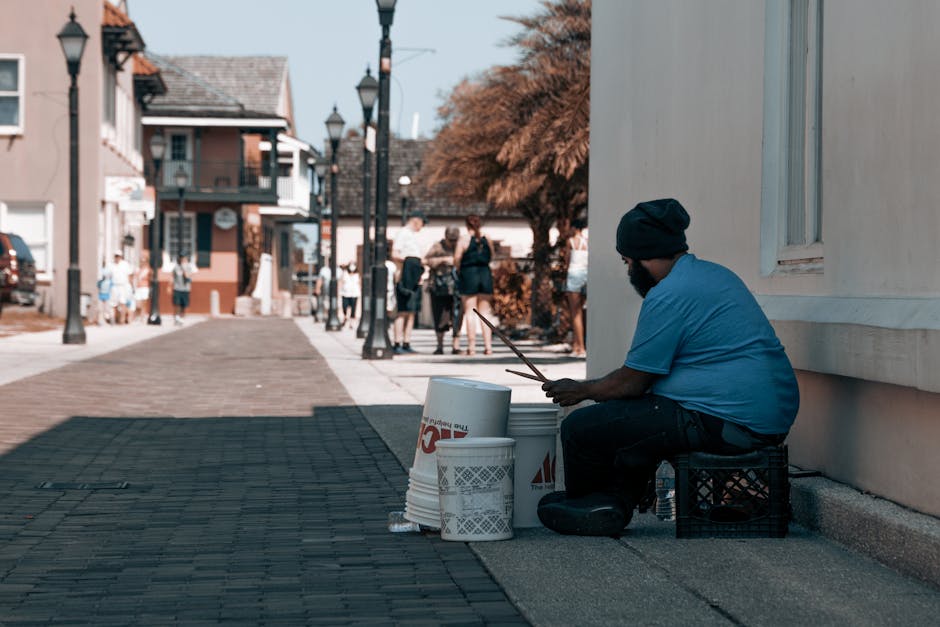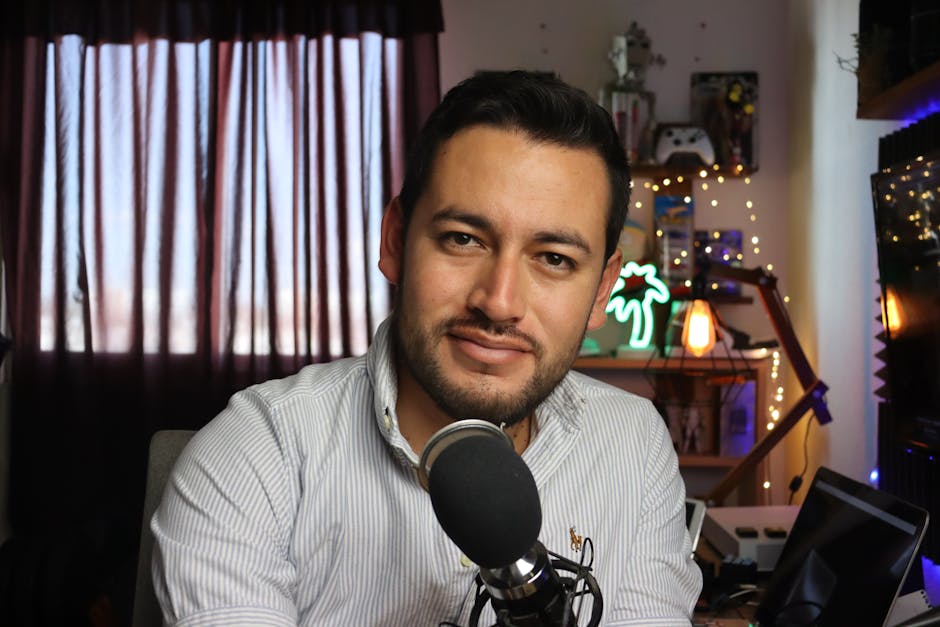My Experience with Building a Podcast Community Around My Show.
My Experience with Building a Podcast Community Around My Show
When I first launched my podcast, “The Creative Echo,” I was so focused on the sound quality, the interviewees, and the weekly release schedule that the idea of a “community” felt like a distant, almost mythical goal. I imagined a dedicated group of listeners, not just consuming content, but actively engaging, discussing, and even shaping the show. It felt like a dream, a natural evolution that surely happened to the big podcasts, but could it happen for a humble show like mine? This is the story of my journey, the stumbles, the breakthroughs, and the genuine connections I forged while building a vibrant podcast community around “The Creative Echo.” It wasn’t an overnight success, but a deliberate, often messy, and incredibly rewarding process.
The Spark: Why I Knew My Podcast Needed a Tribe
From day one, I believed “The Creative Echo” offered something unique: deep dives into the creative process, sharing vulnerabilities and triumphs that resonate with aspiring artists and makers. But simply putting content out there felt like shouting into a void. I wanted a dialogue, not a monologue. The realization hit me hard after receiving a particularly heartfelt email from a listener who felt isolated in their creative journey until they found my show. Their words weren’t just feedback; they were a plea for connection. That email was the spark. It confirmed that my listeners weren’t just data points; they were individuals seeking belonging, shared understanding, and a place to discuss their passions. This wasn’t about vanity metrics; it was about genuine human connection and providing a space where our shared interests could flourish.
Moving Beyond Passive Listening: My Initial Goals
My first goal wasn’t to build a massive following, but to create a small, engaged core. I wanted listeners to feel heard, to know their opinions mattered, and to have a platform to interact with each other. This meant shifting my mindset from “broadcasting” to “facilitating.” I envisioned a place where listeners could share their own creative struggles and successes, offer encouragement, and even inspire future episode topics. It was about transforming a solitary listening experience into a communal one, where the podcast served as a central point for a larger conversation.
Fumbling Towards Connection: My First Attempts at Engagement
Like many podcasters, my initial attempts at community building were, shall we say, a bit clumsy. I’d end episodes with a generic “follow us on social media!” or “leave a review!” While these are important, they don’t inherently foster a community. I quickly learned that true engagement requires more than just a call to action; it requires a reason to connect and a welcoming space to do so.
The Power of Direct Calls to Action
My breakthrough began when I started making highly specific calls to action within the episodes. Instead of “tell us what you think,” I’d say, “Visit our Facebook group, ‘The Echo Chamber,’ and share your biggest creative block this week. I’ll be there to respond!” Or, “Record a short audio message with your thoughts on today’s topic, and we might feature it on next week’s show.” This specificity drastically increased interaction. Listeners knew exactly what to do and where to go, and the promise of being featured was a powerful motivator. It transformed a vague invitation into a concrete opportunity for participation.
Responding to Every Single Message
This might seem small, but it was monumental. In the early days, as the listener base grew slowly, I made a commitment to personally respond to every email, every comment on social media, and every message in our nascent online group. This wasn’t scalable forever, but in those crucial initial months, it built immense goodwill. Listeners felt seen and valued. They understood that there was a real person behind the microphone who cared about their input. This personal touch was the bedrock upon which our community was built, demonstrating authenticity and genuine appreciation for their support.

Finding Our Digital Home: Platforms That Forged Our Bond
Identifying the right platforms was crucial. I experimented with a few, but eventually settled on a combination that worked best for “The Creative Echo” and its audience. It wasn’t about being everywhere, but about being present and active where our listeners naturally gathered and felt comfortable.
Our Discord Server: A Hub for Deeper Dives
This was a game-changer. Initially, I was hesitant about Discord, thinking it might be too niche. But for our audience – often tech-savvy creatives – it was perfect. I created a server with dedicated channels for different topics: “Episode Discussions,” “Share Your Work,” “Creative Challenges,” and even a “Vent & Support” channel. The real-time chat, voice channels, and ability to share images and links instantly fostered a dynamic environment. It became a place where listeners could connect with me, with guests, and most importantly, with each other. It transformed passive listeners into active participants, sharing ideas, critiques, and encouragement daily. The community truly flourished here, becoming an extension of the podcast itself. For those interested in setting up their own, Discord offers robust features for community management.
Leveraging Social Media Beyond Promotion
While Discord became our primary “home,” social media platforms like Instagram and a private Facebook group served as vital gateways. Instead of just announcing new episodes, I used them to post polls related to upcoming topics, ask thought-provoking questions, share behind-the-scenes glimpses, and host live Q&A sessions. These interactions were shorter, more spontaneous, and acted as excellent feeders into our deeper Discord conversations. The private Facebook group, “The Echo Chamber,” specifically became a place for more structured discussions and sharing of creative projects, acting as a bridge for those not yet ready for Discord’s real-time intensity. Understanding audience engagement best practices on these platforms was key.
Beyond the Mic: Nurturing Real Conversations
Building a community isn’t a one-time setup; it’s an ongoing cultivation. I realized that my role extended beyond just producing episodes; I needed to actively participate, facilitate, and celebrate the community itself.
Listener Spotlights and Q&A Episodes
To truly make the community feel like an integral part of the show, I started dedicating segments and even entire episodes to listener contributions. “Listener Spotlight” segments featured short audio clips or written submissions from community members sharing their creative journeys. Our “Community Q&A” episodes allowed listeners to submit questions directly to me or my guests, making them feel like co-creators. This closed the loop, demonstrating that their voices were not just heard but amplified, directly influencing the content and direction of “The Creative Echo.” It was a powerful way to show appreciation and deepen their sense of ownership.
Virtual Meetups: Bridging the Distance
Beyond the asynchronous chats, I organized regular virtual meetups – simple Zoom calls where we could chat face-to-face (or screen-to-screen). These were informal gatherings, sometimes themed around an episode, sometimes just open discussions. The magic happened when listeners from different parts of the world connected, shared their creative projects, and offered advice. These events fostered a sense of camaraderie that text-based communication alone couldn’t fully achieve. They transformed online acquaintances into genuine friends, proving that geographical distance is no barrier to meaningful connection.
The Unexpected Echo: How Our Community Transformed the Show
What started as an effort to give back to my listeners quickly became a profound feedback loop that elevated “The Creative Echo” in ways I hadn’t anticipated. The community didn’t just listen; they contributed, critiqued, and championed the show.
Content Inspiration from Our Listeners
My listeners became an invaluable source of content ideas. Their questions, struggles, and triumphs shared in our Discord server or during Q&A sessions often sparked new episode topics or inspired deeper dives into previously touched-upon subjects. This organic feedback ensured the show remained highly relevant and resonant with its target audience. It felt less like I was guessing what listeners wanted and more like we were co-creating the journey together, making crafting compelling show notes even easier as the content was so audience-driven.
A Built-in Support System and Promotion Engine
Perhaps the most unexpected benefit was the self-sustaining nature of the community. New listeners joining our platforms were often greeted and guided by existing members, reducing my workload and making the onboarding process smoother. Furthermore, these dedicated listeners became the show’s most passionate advocates. They shared episodes, left reviews, and recommended “The Creative Echo” to their friends, acting as a powerful, authentic




Post Comment